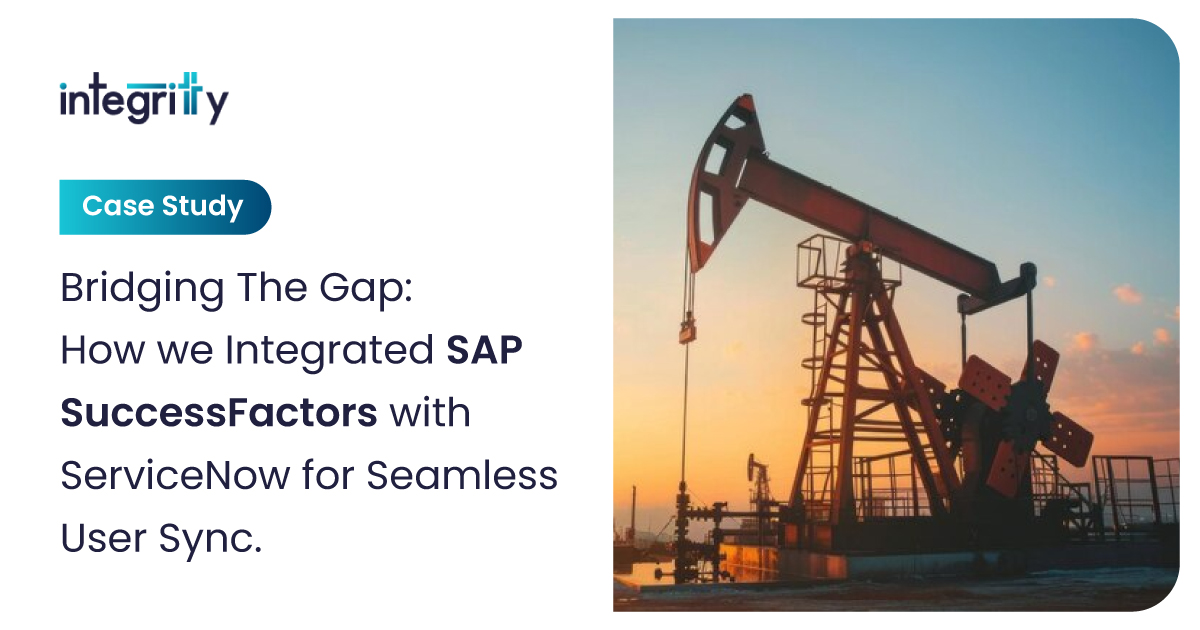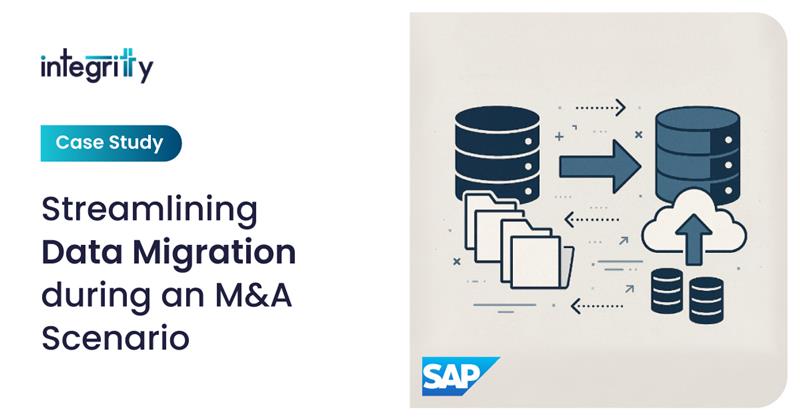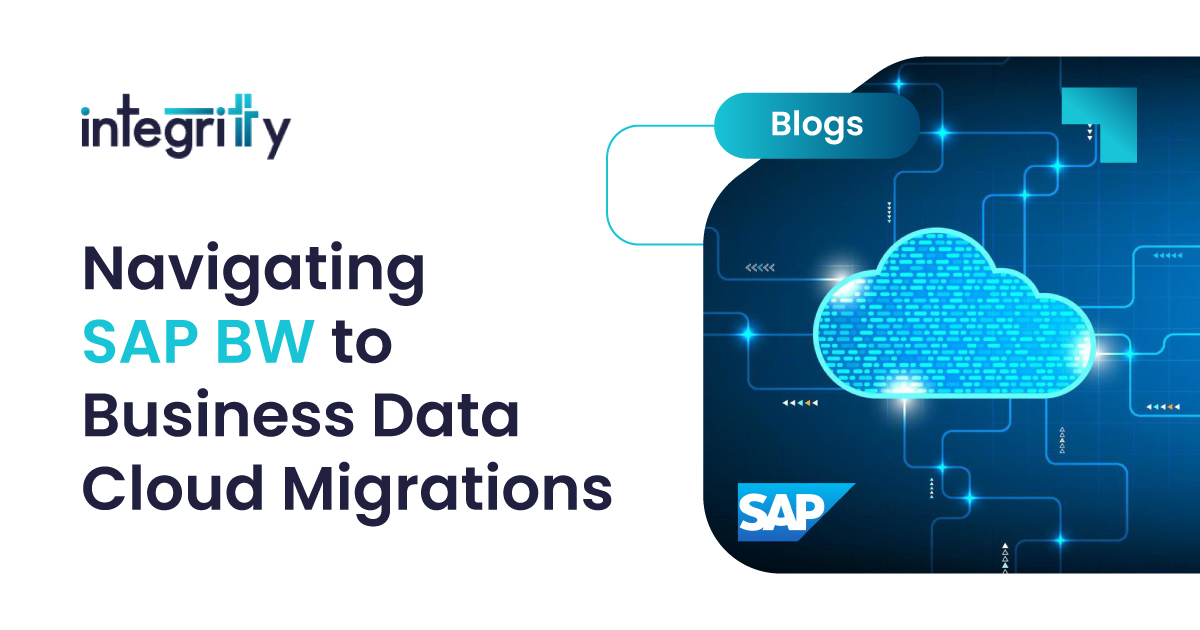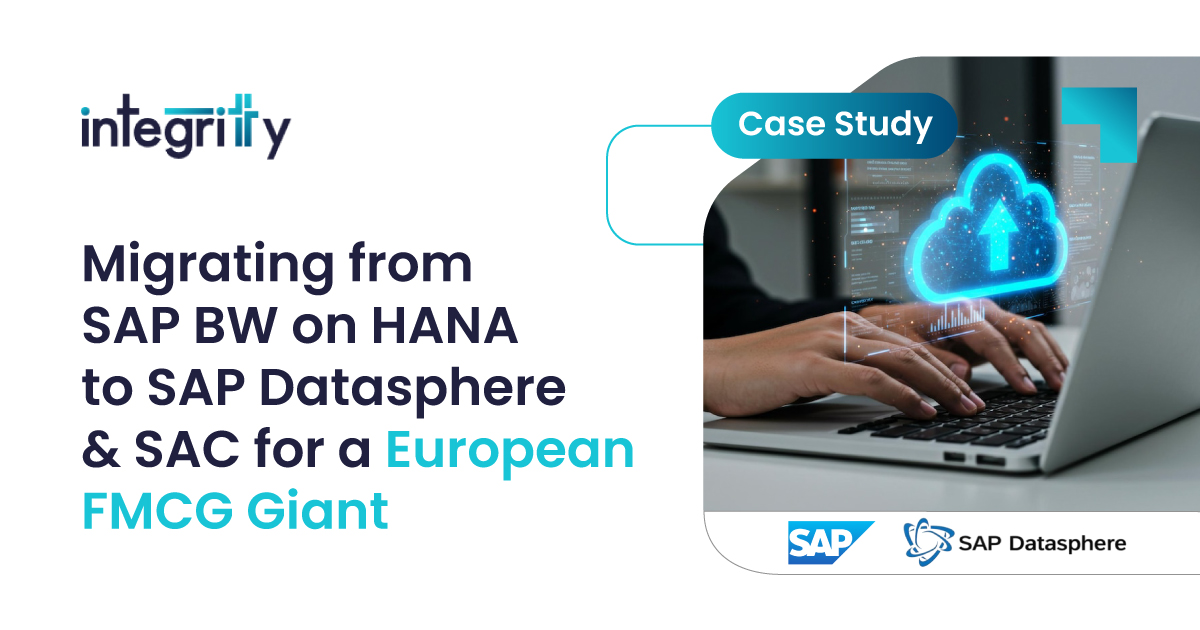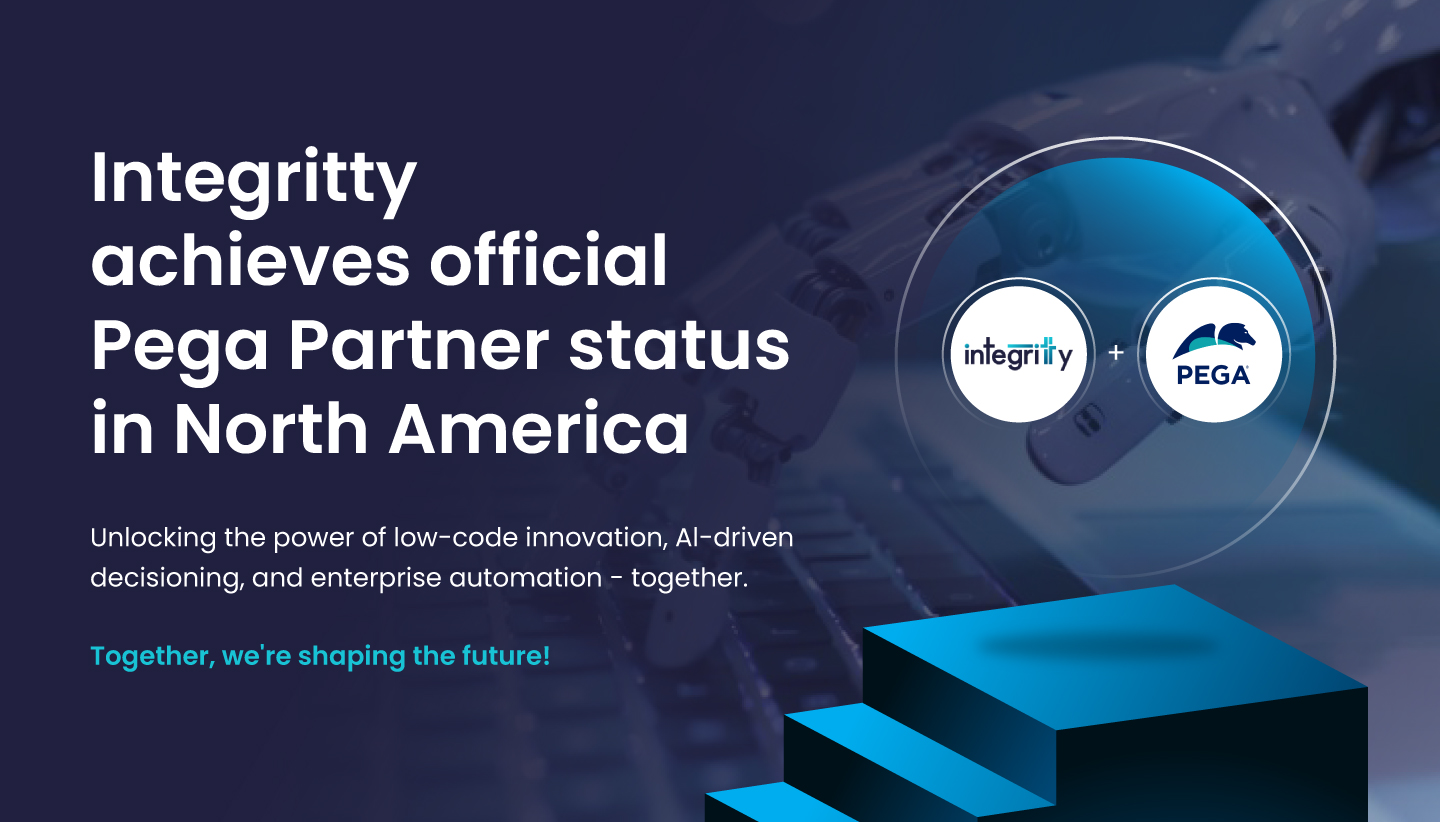A Strategic Roadmap for SAP BW Customers Migrating to SAP Business Data Cloud + Databricks
As enterprises grow more data-driven, the limitations of traditional SAP BW systems are increasingly apparent. Batch processing, data silos, and fragmented third-party integrations make it challenging to generate timely insights, scale analytics capabilities, or support real-time decision-making.
The current environment makes this issue a strategic risk rather than an insignificant inconvenience.
SAP Business Data Cloud (BDC), in conjunction with Databricks, provides a powerful solution for organizations. The cloud-native architecture offers real-time access to both enterprise and external data, along with advanced analytics and machine learning workflows that comply with SAP-standard governance and security requirements.
SAP BW customers who transition to this contemporary architecture experience more than just a migration process, as they undergo a complete transformation.
This blog offers a detailed migration approach that enables SAP BW customers to maximize their data capabilities through the implementation of SAP BDC and Databricks.
Why Consider Moving Beyond SAP BW?
SAP BW has maintained its position as a fundamental tool for enterprise reporting and data warehousing for several decades. The software was created during a different time because unstructured data and IoT inputs, along with real-time processing and self-service analytics, did not exist at that time.
Key limitations that now constrain SAP BW environments:
- Rigid batch-based reporting
- Isolated data marts and silos
- Manual integrations with external systems
- Limited support for AI/ML workflows
- Slow time-to-insight
Organizations must transition from traditional infrastructure to platform-based systems that support intelligent real-time operations to stay competitive. SAP BDC + Databricks delivers exactly what organizations require.

A Step-by-Step Guide to Migrating from SAP BW to SAP BDC + Databricks
Step 1: Assess Your Current Data Environment
The migration journey starts with visibility.
Understand where your enterprise data resides—whether it’s within SAP BW, SAP S/4HANA, third-party systems, or unstructured sources. Catalog the types of data being used across functions (finance, operations, sales, etc.), and identify gaps or duplication.
This step also includes understanding existing reporting use cases, stakeholder needs, and performance issues. A successful data discovery phase creates essential groundwork for a migration approach that delivers specific value to stakeholders.
Step 2: Build the Data Integration Layer with SAP BDC
SAP BDC functions as a unifying tool that connects SAP data with non-SAP data sources through a federated data model. Real-time accessibility of your data becomes possible through central management without physical data movement.
During this phase:
- Connect core systems such as SAP S/4HANA, SuccessFactors, and Concur
- Integrate third-party data via SAP Data Intelligence and native APIs
- Establish data governance and metadata layers for consistency and compliance
The outcome: a single source of truth that spans the enterprise, eliminates silos, and empowers teams to trust their data.
Step 3: Unlock Advanced Analytics with Databricks
SAP BDC handles integration and governance. Databricks, on the other hand, brings analytics firepower.
Once data is unified and accessible, Databricks enables organizations to:
- Run large-scale, real-time queries
- Train and deploy machine learning models
- Collaborate across data science and engineering teams
- Build advanced forecasting and simulation models
Databricks provides analysts and developers with capabilities to surpass static dashboards and perform predictive and prescriptive analytics beyond traditional business intelligence systems. The foundation exists for proactive, insight-led decision-making.
Step 4: Drive Change Management and User Enablement
Migrating platforms is as much a people challenge as it is a technical one.
The implementation of SAP BDC with Databricks requires organizations to adopt new workflows, tools, and mindsets from teams that have been using SAP BW processes for an extended period.
To ensure adoption:
- Build training programs tailored for different user roles
- Offer sandbox environments for exploration and upskilling
- Create clear documentation and self-service guides
- Align reporting structures with updated governance policies
This phase is critical. The success of the entire transformation hinges on whether teams can and will use the tools provided.
How SAP BDC + Databricks Adds Value for SAP BW Customers
The migration to BDC and Databricks isn’t just about solving for what SAP BW lacks—it’s about enabling entirely new capabilities.
1. Real-Time Insights
No more waiting for overnight loans or batch jobs. Data is ingested, processed, and surfaced instantly—so decisions can be made in the moment, not in hindsight.
2. Scalable AI & ML
Databricks natively supports large-scale machine learning, enabling business units to forecast demand, model supply chain scenarios, or personalize customer journeys—all from a single platform.
3. Federated Data Access
SAP BDC ensures that data can be queried across systems without duplication, enabling better governance and faster time to insight.
4. Future-Proof Infrastructure
BDC is built for the cloud, reducing infrastructure complexity and improving scalability, while still integrating seamlessly with your existing SAP landscape.
Realizing the Vision with Integritty
Integritty assists enterprises in their data foundation transformation by uniting extensive SAP knowledge with modern analytics deployment capabilities.
Our end-to-end approach includes:
- BW system evaluation and gap analysis
- Architecture and integration design
- Data migration and governance setup
- Databricks onboarding and ML model development
- Change management, enablement, and support
Our team has led numerous organizations through this transition from traditional SAP reporting to a cloud-native, future-ready architecture.
If your SAP BW environment is limiting your agility, it’s time to evolve.
Let’s talk about how SAP BDC + Databricks can reshape your data strategy.

